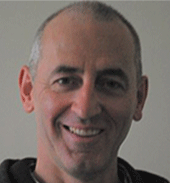More on Synchronization by Michael Shea

I would like to comment about the term “synchronizing” as it is used in biodynamic practice.
At first, it means that the practitioner aligns their perception with the slow tempo of Primary Respiration. To perceive Primary Respiration, the practitioner looks inside of their body or outside into the world of nature. My previous posting talked about orienting to one’s body three dimensionally and to becoming still. Once that occurs, then the practitioner can notice if a slow tempo is available within the boundaries of their skin or longitudinally in the spine. If that is not immediately available, the practitioner slowly moves their attention outside of the office window into whatever nature is visible. Sometimes, that can just be the trunk of a tree or a patch of sky or a beam of sunlight.
Nonetheless, by allowing one’s attention to become unfocused, it is possible to perceive Primary Respiration breathing from the horizon to the midline of the practitioner’s body in rhythmic periods of 50 seconds. Gradually, the inside and outside presence of Primary Respiration merge into one dynamic.Another way in which synchronization is intended in biodynamic practice is by the practitioner sensing their heart rate in the middle of their lungs and ribcage. Sometimes, it can be difficult to sense Primary Respiration, but one’s heart rate is immediately available without even taking a pulse. I like to simply sit, orient to stillness and synchronize my attention with the movement and activity of the heart as my blood is moving through it. I gradually move my attention out to my skin and allow the movement of the heart to pulsate three dimensionally through my body.
Research has shown that this simple heart listening process changes brain structure in a very positive way.
www.michaelsheateaching.com




 Ged Sumner
Ged Sumner